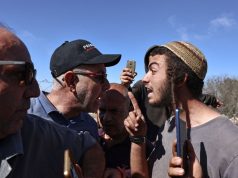
The people may be long gone, but what they left behind fascinates. These five ghost towns are time capsules, giving visitors a peek into what life was like in each community during its heyday. Some are more preserved than others, but behind each dilapidated building and abandoned storefront is a story begging to be told.
Bodie, California

During its peak in the late 1800s, Bodie was a rollicking place, a “classic Wild West adventure story brought to life” with dozens of saloons, gambling halls, opium dens and “houses of ill repute,” said Mental Floss. Its decline started when the gold ran out and mines closed, and was hurried along by two devastating fires that destroyed the majority of its structures.
Bodie became a state park in 1962 and since then has been preserved in a state of “arrested decay.” This makes it a fascinating place to visit, as the buildings are “stocked with the same products and furniture” that were there before the last residents left. Word to the wise: Don’t pocket anything, as legend has it “bad fortune” comes to anyone who “dares to steal an artifact” from Bodie.
Burke, Idaho

Mines and mills began popping up almost overnight after silver ore was discovered here in 1884. Before long, a railroad was bringing people to this boomtown in droves. Burke’s location in a “comically narrow canyon” resulted in “some wonderfully creative architecture,” said Atlas Obscura, including the Tiger Hotel. Due to a lack of space, the railroad tracks had to cut through the lobby, and five train cars chugged into the building every day.
The town’s slow decline began in the early 1900s, and in 1991 the final mine closed. What remains is a mix of “decaying” buildings, abandoned mining equipment and an unmarked cemetery filled with destroyed headstones.
Calico, California

Calico came and went in a flash, before its second act barely started. The town got its start in 1881, when four prospectors found silver. Within four years, more than 500 mines opened, a school and post office were built and the population swelled to 1,200. Once borate mineral colemanite was discovered, the population increased to nearly 4,000. When the price of silver dropped dramatically in the 1890s, businesses started to shutter in Calico, and by the early 1900s it was a ghost town.
The story doesn’t end there, though. Businessman Walter Knott of Knott’s Berry Farm fame bought Calico in the 1950s and restored or recreated many of the buildings (some original structures, like Lil’s Saloon, also remain). Calico Ghost Town is now a “tourist haven for Wild West and Gold Rush enthusiasts,” said Secret Los Angeles, with mine tours, stunt shows, gold panning and overnight camping available.
Garnet, Montana

Once the gold was gone from Garnet, so were the people. In the 1890s and early 1900s, this was a bustling place, home to 1,300 residents and 13 saloons. It’s said that between 1897 and 1917, Garnet produced around $1 million in gold, but the gold soon dried up and the town was essentially abandoned in the 1920s.
Now, Garnet is one of the best-preserved ghost towns in Montana and a “wonderful place” to learn about the state’s history and culture, said Travel and Leisure. Visitors can explore Kelly’s Saloon, stop by the F.A. Davey General Store and “walk across the creaky floors” of the J.K. Wells Hotel, making it “easy” to imagine what Garnet was like back in the day.
Rhyolite, Nevada

When it was booming, Rhyolite was really booming. The discovery of gold and silver in 1904 caused a massive rush to the area, and soon a stock exchange was established, hotels and an opera house were built and a three-story, $90,000 bank building was erected. By 1907, the town had electricity and piped water, but that was also the year of the Bankers’ Panic, a major financial crisis that saw Wall Street lose half its value.
It was downhill from there, with the mines closing, mill shutting down, bank failing and power being turned off in 1916. Today, “large structures still stand, albeit without all the walls, ceilings and windows,” said the Victor Valley Daily Press, which is enough to show visitors how the town once looked. Right outside of Rhyolite is something ever-changing: the Goldwell Open Air Museum, home to several “interesting” modern art sculptures, including a recreation of “The Last Supper.”
Enjoy a glimpse of the past






